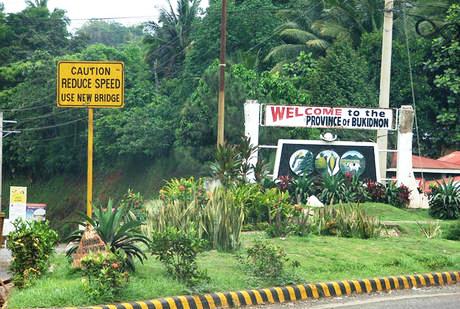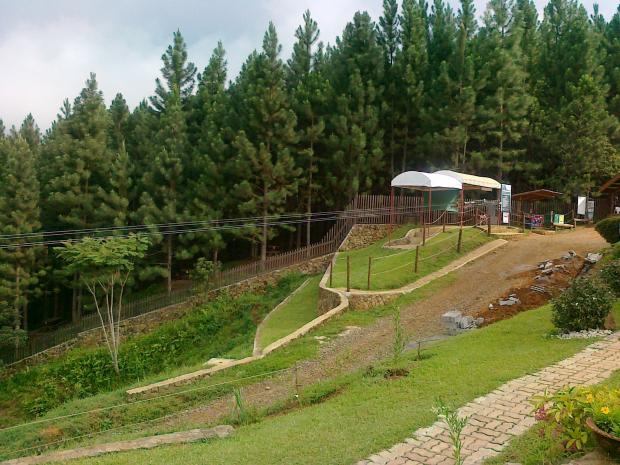Bukidnon is a province of the Philippines, located at the center on the island of Mindanao is. It has one of the few provinces of the island nation landlocked. The province is the leading producer of rice and corn in the region. Plantations in the province also produce pineapples, bananas and sugarcane.
Its capital is Malaybalay City. It is politically the District X Northern Mindanao assigned. In 2007, a total of 1,229,599 inhabitants of the province was recorded on the census.
History
Bukidnon was around 1850 a large part of the former province of Misamis The entire area was at that time the word Malaybalay ("little houses") refers to the inhabitants were called Bukidnons ("hill people").
The Philippine Commission, led by the Parliamentary Commissioner Dean C. Worcester struck on 20 August 1907, the secession of the province of Misamis Bukidnons ago. On 1 September 1914 by Phil Com Act No. 1693 of the province of Agusan arranged the appointment with the sub-province of Bukidnon.
To own a regular province of Bukidnon on 10 March 1917, upon entry into force of Act No. 2711 by the Department of Mindanao and Sulu.
Attractions
The province, due to its mountainous location, numerous natural attractions such as waterfalls, lakes, caves, high mountains, deep gorges and canyons. It is in the province are home to many indigenous peoples who have retained their own culture. The nature of the flora and fauna offers excellent conditions to develop a unique biodiversity, Bukidnon is considered a hotspot of biodiversity in the Philippines.
Its capital is Malaybalay City. It is politically the District X Northern Mindanao assigned. In 2007, a total of 1,229,599 inhabitants of the province was recorded on the census.
Geography
The province borders, clockwise from the north beginning at Misamis Oriental, Agusan Del Sur, Davao Del Norte, Cotabato, Lanao Del Sur and Lanao Del Norte.
Topographically, the province is through the mountain ranges of Mount Kimangkil, the Pantaron Mountains, the Tankulan Mountains; the Tago mountain dominates the Kalatungan Mountains and the Kitanglad Mountains. Between the mountains are extensive plains extend with vast grasslands, the rivers deep, some canyon-like gorges created. It has an average elevation of 912 m. The north of the province extend a series of flat undulating plateaus, which are separated by deep canyons and vast valleys. The south of the province is much flatter and slowly turns into the center Mindanao basin.
The highest mountain in the province, the Dulang-Dulang, with a summit elevation of 2,938 m and the second highest in the Philippines, followed by Kitanglad with a height of 2,899 meters and 2,824 meters high Kalatungan.
In Bukidnon, the source and the water catchment area of many large rivers are in Mindanao. At the headwaters of the river include the Salug, a source of flow of Davao is. It has its catchment area in the southeast of the province, which covers an area of 388.30 km ². The Rio Grande de Mindanao is the biggest and largest river in the province; he has in the province of a catchment area of 4821.38 km ², its main tributaries are the Muelta and Maridugao. He is called in Bukidnon Pulangi, and its source lies in the north of the province. Achieve the province's only by land, for example, of Cagayan de Oro City from a major city in the neighboring province of Misamis Oriental, which has a seaport and airport. The province has an area of 10,498.59 km², making it the eighth largest province of the Philippines.
History
Bukidnon was around 1850 a large part of the former province of Misamis The entire area was at that time the word Malaybalay ("little houses") refers to the inhabitants were called Bukidnons ("hill people").
The Philippine Commission, led by the Parliamentary Commissioner Dean C. Worcester struck on 20 August 1907, the secession of the province of Misamis Bukidnons ago. On 1 September 1914 by Phil Com Act No. 1693 of the province of Agusan arranged the appointment with the sub-province of Bukidnon.
To own a regular province of Bukidnon on 10 March 1917, upon entry into force of Act No. 2711 by the Department of Mindanao and Sulu.
Attractions
The province, due to its mountainous location, numerous natural attractions such as waterfalls, lakes, caves, high mountains, deep gorges and canyons. It is in the province are home to many indigenous peoples who have retained their own culture. The nature of the flora and fauna offers excellent conditions to develop a unique biodiversity, Bukidnon is considered a hotspot of biodiversity in the Philippines.
- The Mount Kitanglad Range Natural Park in North Central Bukidnon
- The Mount Kalatungan Range Natural Park
- The Pulangi River
- The cave and the Sumalsag Alalum waterfalls in Sumilao
- The Pinamaloy Lake in Don Carlos and the Lake Apo in Guinoyoran
- The Luan-Luan pool in Quezon
- The MGM Mountain Resort, Maramag
- The Talaandig Ancestral Territory in Lanpatan
- The largest flowering plant in the Philippines, the Rafflesia Schadenbergiana in Baungon
- The Napalit Lake in Pangantucan
- The 646-meter-high active volcano Musuan
- The Board Overview & Nature Park and Gue's Garden in Quezon
- The mountain in Pigtayuan Damulog
~~~
~~~


No comments:
Post a Comment